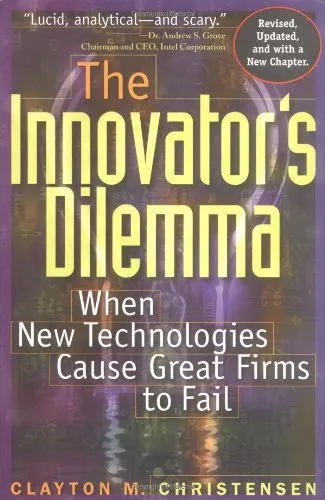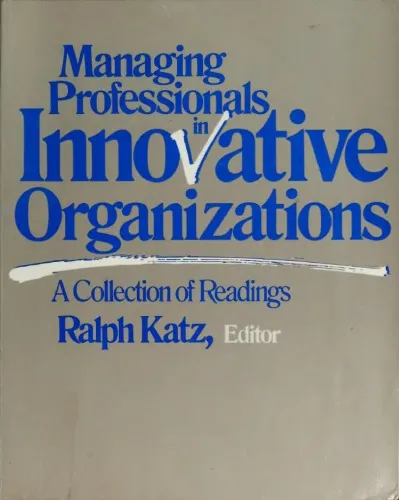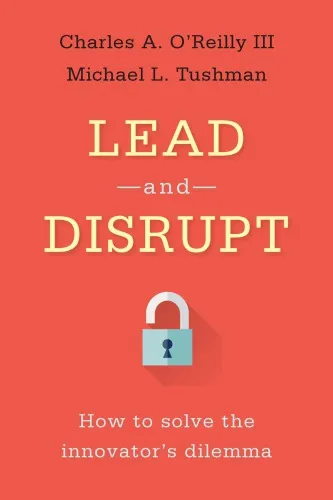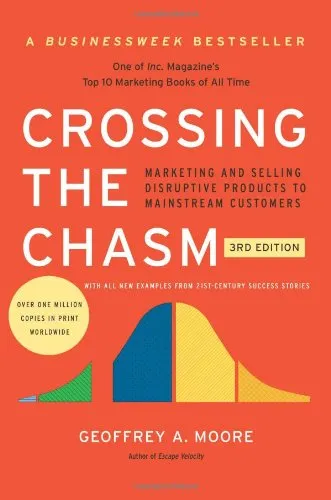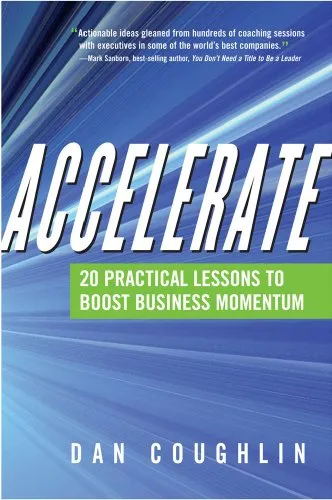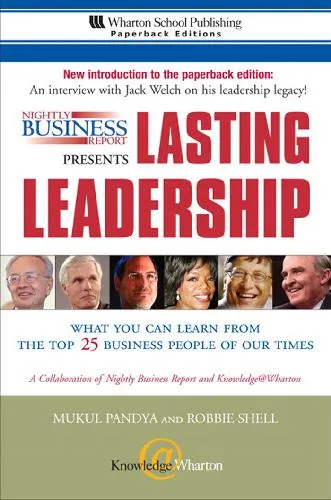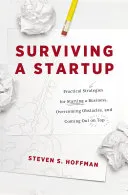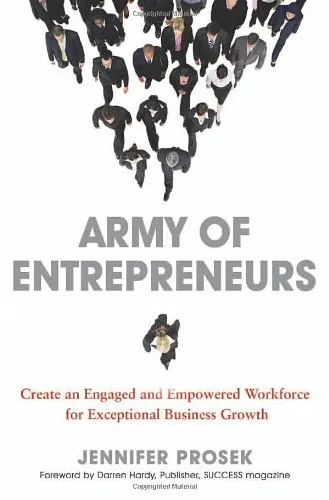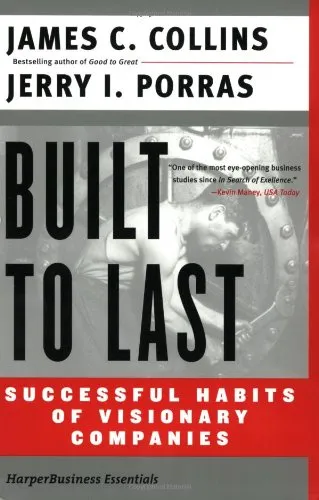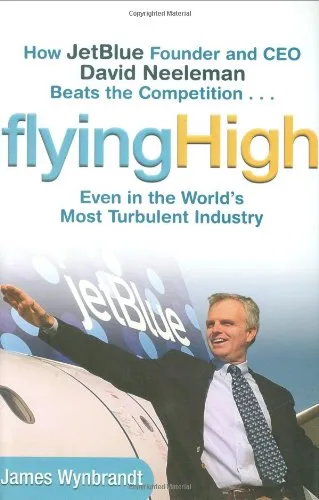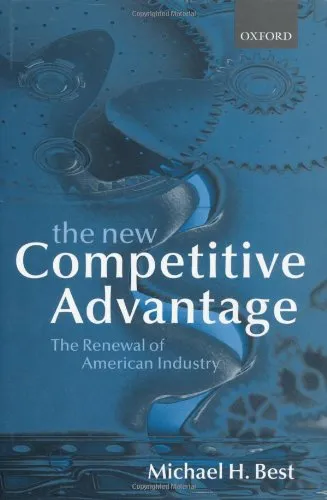The Innovator's Dilemma: When New Technologies Cause Great Firms to Fail (Management of Innovation and Change Series)
4.0
بر اساس نظر کاربران

شما میتونید سوالاتتون در باره کتاب رو از هوش مصنوعیش بعد از ورود بپرسید
هر دانلود یا پرسش از هوش مصنوعی 2 امتیاز لازم دارد، برای بدست آوردن امتیاز رایگان، به صفحه ی راهنمای امتیازات سر بزنید و یک سری کار ارزشمند انجام بدینکتاب های مرتبط:
Persian Summary
مقدمه
کتاب 'The Innovator's Dilemma: When New Technologies Cause Great Firms to Fail' یکی از مهمترین آثار در زمینه نوآوری و مدیریت تغییر است. نویسنده این اثر، Clayton M. Christensen، با بررسی عمیق چگونگی شکست شرکتهای بزرگ در مواجهه با فناوریهای نوین، به ما میآموزد که چرا و چگونه حتی شرکتهای پیشرو نیز ممکن است در مواجهه با تغییرات بازار شکست بخورند.
خلاصهای از کتاب
این کتاب به ارائه مفهومی به نام "disruptive innovation" یا نوآوریهای تخریبی میپردازد. Christensen استدلال میکند که نوآوریهای تخریبی در ابتدا به نظر نمیآیند به اندازه محصولات و خدمات کنونی ارزشمند باشند، اما به سرعت رشد کرده و بازارهای جدیدی ایجاد میکنند. این موضوع باعث میشود شرکتهای بزرگ، با قدرت مالی و بازار بیشتر، به دلیل تمرکز بیش از حد بر تقاضاهای مشتریان فعلی و نادیدهگیری پتانسیلهای نوظهور، دچار مشکل شوند. نویسنده نمونههای متعددی از صنایع مختلف ارائه میدهد تا نشان دهد چگونه نوآوریهای تخریبی میتوانند به زوال شرکتهای بزرگ منجر شوند.
نکات کلیدی
- مفهوم اساسی 'The Innovator's Dilemma' تأکید بر این است که نوآوریهای تخریبی لزوماً توسط شرکتهای کوچک موجب میشود و نه بزرگان بازار.
- فهم اینکه چرا شرکتهای بزرگ نوآوریهای تخریبی را نادیده میگیرند: آنها بیشتر به مشتریان فعلی خود و سودهای موجود توجه دارند.
- راهکارهایی برای شرکتها: ایجاد واحدهای کوچکتر و مستقل که میتوانند در بازارهای جدید فعالیت کنند، بدون تأثیر منفی از وابستگی به مکانیزمهای قدیمی شرکت مادر.
جملات معروف از کتاب
"Companies often fail because they fail to innovate; it’s the pace of change that’s a challenge, not the change itself."
"The reason big firms fail is not because they are bad companies. They do everything right, but they focus on the right things at the wrong time."
چرا این کتاب مهم است
این کتاب به عنوان یک اثر پایهای در حوزه مدیریت نوآوری و تغییر شناخته میشود. اهمیت آن نه تنها در ارائه اصول نظریه نوآوریهای تخریبی است، بلکه در ارائه راهکارهای عملی برای مدیران و تصمیمگیرندگان سازمانی است تا بتوانند با این چالشها مواجه شوند. با افزایش سرعت تغییرات تکنولوژیکی و رقابت جهانی، شناخت الگوهای موفقیت و شکست در مواجهه با نوآوریها به شدت حیاتی است. این کتاب همچنان پس از بیش از دو دهه از انتشارش، یکی از منابع اساسی برای فهم بهتر از دلایل شکست شرکتهای بزرگ و نحوه ایجاد سازگاری با تغییرات نوظهور است.
Introduction to 'The Innovator's Dilemma'
Clayton M. Christensen's seminal work, "The Innovator's Dilemma: When New Technologies Cause Great Firms to Fail", explores the central challenges successful companies face upon encountering disruptive technologies.
Detailed Summary of the Book
Published in 1997, Christensen's "The Innovator's Dilemma" introduced the concept of disruptive innovation, fundamentally changing how businesses perceive technological advancement. The book explores why well-managed, high-performing companies often lose market leadership when confronted by disruptive changes. These firms, despite doing everything "right" - listening to customers, investing in technology, and focusing on their core business strengths - inadvertently become victims of their own success.
The narrative unfolds through a series of well-researched industry case studies, from disk drives to mechanical excavators, emphasizing how disruptive technologies introduce a new set of values and potentially render existing competencies obsolete. The author offers a chronological explanation of how companies initially engage in incremental, sustaining innovations that improve existing product performance. However, as new, unproven technologies emerge, these firms struggle because such innovations initially have lower performance attributes that don’t current mainstream market demands.
Christensen's insights are richly detailed, drawing upon historical examples to showcase how small entrants with innovative approaches manage to disrupt market giants. He then advocates for managers to not just focus on listening to their current customer base but to look forward and identify potentially disruptive technologies early on. By doing so, firms can set the stage to capitalize on emerging trends rather than falling victim to them.
Key Takeaways
- Disruptive innovations tend to underperform established products initially but can capture new or emerging markets by providing different value propositions.
- Large firms often fail not because they disregard customer needs but because they prioritize efficiency and consistency over exploration of disruptive trends.
- Adopting a more flexible organizational structure that allows experimentation can enable firms to respond proactively to disruptive innovations.
- Organizations should create autonomous units that focus specifically on the development and promotion of disruptive innovations to avoid internal conflicts.
Famous Quotes from the Book
"The pursuit of profit rather than growth is what ultimately drives most companies into the innovator's dilemma."
"Companies fail because they invest in skills and products that are valuable to customers today instead of those that will be valuable tomorrow."
Why This Book Matters
"The Innovator's Dilemma" is a profound exploration into why great businesses can fail despite sound management and outstanding customer focus. It serves as a vital warning and guide for companies striving to innovate effectively without losing competitive edge. Christensen's work has been instrumental in influencing the strategic direction of firms worldwide, encouraging them to embrace change, think beyond existing paradigms, and consider the potential of groundbreaking technologies that may seem insignificant in the present.
This book is especially critical in today's fast-paced, tech-driven society, where new entrants and technologies continuously reshape industries. Understanding Christensen’s thesis equips managers and leaders with the strategic foresight to adapt and lead through disruptive waves instead of being capsized by them.
دانلود رایگان مستقیم
شما میتونید سوالاتتون در باره کتاب رو از هوش مصنوعیش بعد از ورود بپرسید
دسترسی به کتابها از طریق پلتفرمهای قانونی و کتابخانههای عمومی نه تنها از حقوق نویسندگان و ناشران حمایت میکند، بلکه به پایداری فرهنگ کتابخوانی نیز کمک میرساند. پیش از دانلود، لحظهای به بررسی این گزینهها فکر کنید.
این کتاب رو در پلتفرم های دیگه ببینید
WorldCat به شما کمک میکنه تا کتاب ها رو در کتابخانه های سراسر دنیا پیدا کنید
امتیازها، نظرات تخصصی و صحبت ها درباره کتاب را در Goodreads ببینید
کتابهای کمیاب یا دست دوم را در AbeBooks پیدا کنید و بخرید
1527
بازدید4.0
امتیاز0
نظر98%
رضایتنظرات:
4.0
بر اساس 0 نظر کاربران
Questions & Answers
Ask questions about this book or help others by answering
No questions yet. Be the first to ask!
